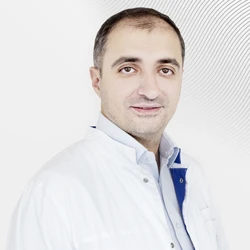Mastoiditis
Author: Alexander Slavskiy, otorhinolaryngologist-surgeon, Associate Professor, Candidate of Medical Sciences
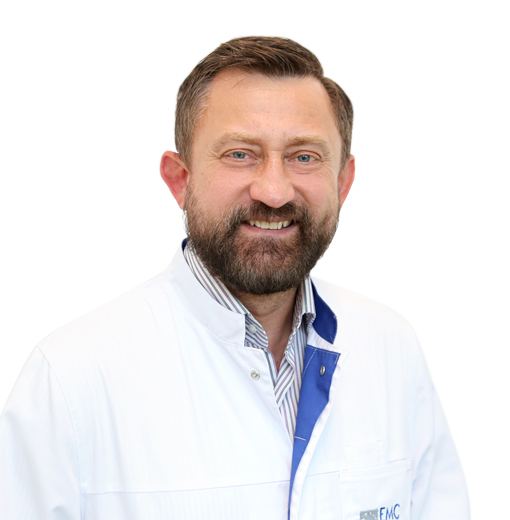 Mastoiditis is a purulent inflammation of the mucous membrane and bone tissue of the mastoid process. The mastoid process is located behind the ear and contains air-filled bone cavities.
Mastoiditis is a purulent inflammation of the mucous membrane and bone tissue of the mastoid process. The mastoid process is located behind the ear and contains air-filled bone cavities.
Reasons
This type of inflammation usually develops with high activity (virulence) of the infection against the background of reduced body resistance. Predisposing factors may be a delay in the initial stages of acute purulent otitis media, a mechanical obstacle to the outflow of inflammatory fluid - exudate (accumulates in the ear during inflammation), as well as insufficient aeration of the middle ear cavities with concomitant diseases of the nose and paranasal sinuses.
Symptoms
Clinical manifestations of mastoiditis can appear both on 1-2 days and on 5-8 weeks of acute inflammation of the middle ear. Patients are concerned about severe soreness in the ear and mastoid process with a spread to the entire half of the head, pulsating noise in the ear appears, and the phenomena of general intoxication progress – weakness, malaise, and fever.
Diagnostics
The main list of diagnostic procedures for mastoiditis:
-
Mandatory full examination by an otorhinolaryngologist with otomicroscopy (typical signs will be positive).
On examination, there is swelling and redness of the skin in the behind-the-ear area, smoothness of the behind-the-ear skin fold, and this area is painful when feeling and shaking.
Upon examination of the eardrum, pronounced hyperemia of the eardrum is noted with overhanging of the posterior wall of the external auditory canal (a typical sign of mastoiditis). Copious suppuration of a pulsating nature may often occur, and the symptom of a "well" is characteristic (when, when a purulent discharge is removed, it fills the cavity again).
- CT scan of the temporal bones (detection of signs of destruction of the cells of the temporal bone).
-
Clinical blood test with calculation of leukocyte formula, ESR.
According to laboratory studies, there is an increase in the level of white blood cells (blood cells that protect our body from infection), an acceleration in the rate of erythrocyte sedimentation (ESR).
-
Audiological examination.
With audiometry, hearing is reduced mainly by the type of damage to the sound-conducting apparatus, but it can also be of a mixed type.
Classification
The classification of mastoiditis according to the literature varies. Let's focus on the common one. The following forms of mastoiditis are distinguished:
-
Primary mastoiditis develops when an infection spreads through the bloodstream or with a traumatic origin of mastoiditis.
-
Delayed mastoiditis – develops long after the healing of the inflammatory process in the tympanic cavity.
-
Recurrent mastoiditis is when each new otitis is accompanied by the appearance of signs of mastoiditis.
Complications
Taking into account the peculiarities of the structure of the mastoid process (the development of the cellular system), under certain conditions, the accumulation or breakthrough of pus in bone cells can cause unusual forms of mastoiditis. They are called special forms.
These include:
-
Zygomaticitis – the zygomatic cells are involved in the pathological process. The pain is localized in the area of the zygomatic process, where there is swelling of the soft tissues, and later a breakthrough of pus. The spread of inflammation to the eye area leads to a narrowing of the ocular fissure. During otoscopy, an overhang of the upper wall of the external auditory canal is noted.
-
Chitelli cell damage – the pathological process involves cells located deep in the mastoid process around the sinus, which leads to the formation of an abscess around the latter and thrombophlebitis of the sinus.
-
Apecitis – cells located at the tip of the mastoid process are affected. In this case, the breakthrough of pus through the cells can lead to the development of special forms of mastoiditis with a subcutaneous spread of the purulent process (subperiosteal abscess).
-
The Bezold form of mastoiditis is painful head movement, the patient's position is forced – the head is tilted to the sore side and forward. The side wall of the neck is edematous, on palpation, the tip of the mastoid process is not contoured, and painful swelling is noted. When pressing on the infiltrate, suppuration from the ear is noted. The process may be complicated by the spread of pus through the soft tissues of the neck to the side behind the back wall of the pharynx (into the area of fiber, which is located there). This inflammatory process can lead to the development of purulent diseases of the chest organs (mediastinitis).
-
Orléanski mastoiditis – the area of the outer surface of the tip of the mastoid process is compacted (infiltrated, the skin above it is hyperemic, painful to the touch).
-
Mouret's mastoiditis – from the tip of the mastoid process, pus breaks into the soft tissues of the neck, onto the deep cervical lymph nodes, and spine.
-
Petrositis is a lesion of the tip of the pyramid of the temporal bone, which is accompanied by neuropathy of the facial nerve, ptosis, double vision, ophthalmoplegia. There may also be paresis of the soft palate, painful sensations in the pharynx due to damage to the glossopharyngeal nerve.
Stages
Changes in the mastoid process in mastoiditis vary depending on the stage of the disease.
The following stages are distinguished:
Stage I is exudative. The mucous membrane and periosteum of the mastoid cells are involved in the process; they are filled with purulent-inflammatory fluid, the mucous membrane is inflamed and sharply thickened.
Stage II — alterative (destructive). It is characterized by the predominance of destructive changes that spread to the bone structures of the mastoid process. In this case, bone destruction occurs, and granulations form. The bone bridges between the cells necrotize, and the cells merge to form one common cavity filled with pus, forming the empyema of the mastoid process.
Mastoiditis prevention – competent treatment of acute otitis media
Therapeutic measures for any ear pathology should be aimed primarily at relieving pain and symptoms of general intoxication, as well as at stopping the spread of the pathological process through the cellular system of the temporal bone, preventing the development of persistent hearing disorders and otogenic complications.
We pay great attention to the normalization of nasal breathing, and therefore we prescribe vasoconstrictor nasal drops and drugs containing topical glucocorticosteroids. To relieve pain and inflammation in the ear, we prescribe combined ear drops with analgesic, anti-inflammatory and antimicrobial effects.
In addition to local therapy for moderate to severe acute otitis media, general anti-inflammatory treatment with broad-acting antibacterial drugs is performed.
The lack of proper treatment of acute ear pathology, as well as frequent exacerbations of this disease, can lead to further complications and the formation of chronic forms of ear pathology.
Treatment of mastoiditis
When mastoiditis occurs, an anthromastoidotomy is performed. The operation consists in opening the mastoid process and removing the pathological contents from it. It is performed under general anesthesia under the control of a microscope. The recovery period depends on the form of mastoiditis and the amount of surgical intervention.
This type of surgery is usually performed as an emergency because mastoiditis can cause serious complications. These are intracranial complications, pathology of the facial nerve, purulent swelling of the soft tissues of the neck, and even mediostinitis.
Antibacterial drugs are used without fail. As a rule, at the beginning of the disease, a broad-spectrum antibacterial drug is prescribed, and after determining the pathogen, the drug to which it is most sensitive is selected.
Literature
-
Varosyan E.G. Acute purulent otitis media, complications. Methodical manuals for doctors. 2019
-
Palchun V.T., Kryukov A.I., Kunelskaya N.L. and others. Acute inflammation of the middle ear. Bulletin of otorhinolaryngology.1997. № 6. 153-155.
-
Yanov Yu.K., Antushova I.A. Antibacterial therapy in otorhinolaryngology and basic principles of evidence-based medicine. Russian otorhinolaryngology. 2004. № 3(10) 122-124.
-
Sako Amidu Baba. Purulent inflammation of the middle ear, bacteriological studies and therapeutic possibilities. Bulletin of otorhinolaryngology. 1995. № 1. 12-14.
-
Zelikovich E.I. CT of the temporal bone in the diagnosis of adhesive otitis media. Bulletin of otorhinolaryngology. Moscow, 2004. № 2. 33-35.
-
Butler C.C., Williams R.G. The etiology, Pathophysiology and Management of Otitis Media with Effusion. Curr. Infect. Dis. Rep., 2003, 3: 205-213.
-
Lieberthal, AS; Carroll, AE; Chonmaitree, T; Ganiats, TG; Hoberman, A; Jackson, MA; Joffe, MD; Miller, DT; Rosenfeld, RM; Sevilla, XD; Schwartz, RH; Thomas, PA; Tunkel, DE (March 2013). "The diagnosis and management of acute otitis media". Pediatrics. 131 (3): 964–999.
-
Kozyrskyj, A; Klassen, TP; Moffatt, M; Harvey, K (8 September 2010). "Short-course antibiotics for acute otitis media". The Cochrane Database of Systematic Reviews
-
Rovers MM, Schilder AG, Zielhuis GA, Rosenfeld RM (2004). "Otitis media". Lancet. 363 (9407): 564–573.
Why the EMC
The first and only clinic in Russia, created in the image of the world's leading clinics
EMC is a multidisciplinary center offering patients a high level of medical services and a personalized approach
Worldwide recognition and awards
 Learn more
Learn more
Worldwide recognition and awards
 Certificates and licenses
Certificates and licenses
Make an appointment for a consultation
Specify your contacts and we will contact you to clarify the details
Reviews
and new products of the EMC

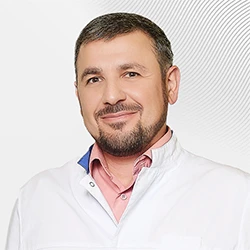

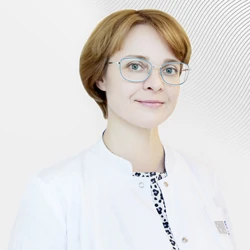

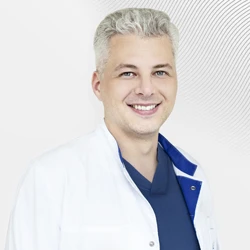

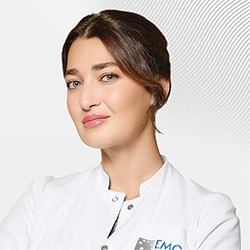
.webp)


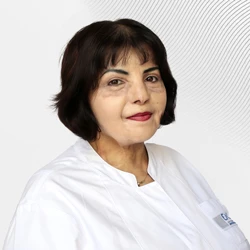
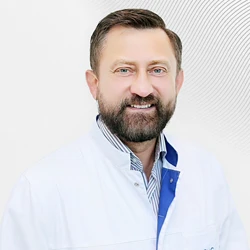
.webp)
